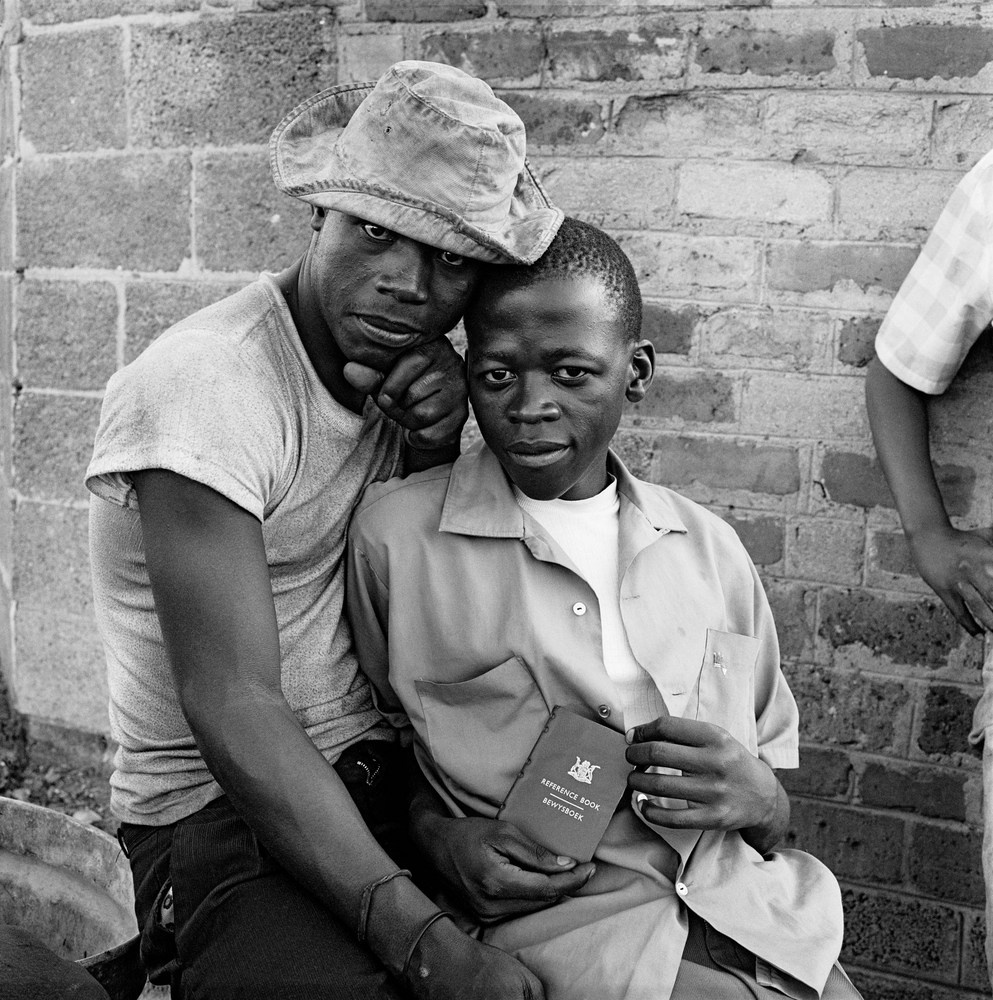David Goldblatt

The photograph might first appear as a tender portrait of two men who lean against one another with shared affection. Yet the title, Young men with dompas, directs the viewer’s attention not to the men’s intimacy but to the small document they hold. It is the fulcrum around which the photograph is arranged – an object of hatred in an image of close companionship. Under apartheid, every black man was made to carry a passbook, an insidious instrument of control and restriction. Known colloquially as the dompas (the dumb pass), the passbook became one of the most despised symbols of apartheid, a metonym of black oppression under white-minority rule. Following the Sharpeville Massacre in 1960 – where policemen opened fire on an anti-pass march – hundreds of people burnt their passbooks in protest against the regime’s brutality. A week later, South Africa entered its first State of Emergency. The dompas remained.
This photograph appears in Lifetimes Under Apartheid, 1986; Fifty-one Years, 2001; Kith Kin & Khaya, 2011; TJ, 2011; The Pursuit of Values, 2015; and Structures of Dominion and Democracy, 2018.
b.1930, Randfontein; d.2018, Johannesburg
“I was drawn,” the late photographer David Goldblatt wrote, “not to the events of the time but to the quiet and commonplace where nothing ‘happened’ and yet all was contained and immanent.” A preeminent chronicler of South African life under apartheid and after, Goldblatt bore witness to how this life is written on the land, in its structures or their absence. Unconcerned with documenting significant historic moments, his photographs stand outside the events of the time and yet are eloquent of them. Through Goldblatt’s lens, the prosaic reveals a telling poignancy. Even in those images that appear benign, much is latent in them – histories and politics, desires and dread. His photographs are quietly critical reflections on the values and conditions that have shaped the country; those structures both ideological and tangible. Among his most notable photobooks are On the Mines (1973), Some Afrikaners Photographed (1975), In Boksburg (1982), The Structure of Things Then (1998), and Particulars (2003).